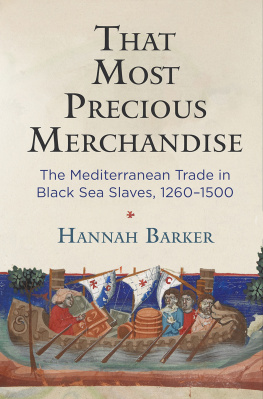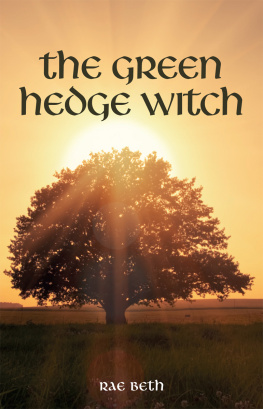
It flashed across her mind that she had never before seen a rabbit with either a waistcoat-pocket, or a watch to take out of it, and burning with curiosity, she ran across the field after it, and fortunately was just in time to see it pop down a large rabbit-hole under the hedge. The hedge is often incorrectly replaced by a tree in modern adaptations.
While, as the Kingsley Amis character Jim Dixon points out in Lucky Jim, The point about Merrie England is that it was about the most un-Merrie period in our history.
The word forest is a problematic one as Oliver Rackham has sternly pointed out, historically it didnt mean woodland, but was the term used for enclosed hunting areas in the Norman period a place of deer rather than a place of trees. However, it is in general use as a term for woodland, so I will risk using it that way.
Just to complicate matters, a recent DEFRA Hedgerow Survey Handbook gives an even more pedantic definition: A hedgerow is defined as any boundary line of trees or shrubs over 20m long and less than 5m wide at the base, provided that at one time the trees or shrubs were more or less continuous. It includes an earth bank or wall only where such a feature occurs in association with a line of trees or shrubs. This includes classic shrubby hedgerows, lines of trees, shrubby hedgerows with trees and very gappy hedgerows (where each shrubby section may be less than 20m long, but the gaps are less than 20m). Perhaps we should just agree that there is no perfect definition
Woodland ghost can be used as a name for assart hedges, but it can also refer to these woodland plant species that survive in assart hedges.
Thoreau speaks of fencerows in his journal: It is only necessary that man should start a fence that Nature should carry it on and complete it. The farmer cannot plow quite up to the rails or wall which he himself has placed, and hence it often becomes a hedgerow and sometimes a coppice.
My wife tells me that when she was young, a nearby house achieved the same effect with more humour the owner kept the children out very effectively with a BEWARE OF THE SNAKES sign.
Hedges were used in the same way by musketeers in the English Civil War.
In his classic The Making of the English Landscape, W. G. Hoskins writes: I believe in general that boundaries are one of the most ancient features in the English landscape parish, county, hundred, estate.
Horace Walpole points out this was not a grand garden by modern standards: As late as Homers age an enclosure of four acres, comprehending orchard, vineyard and kitchen-garden, was a stretch of luxury the world at that time had never beheld. (On Modern Gardening: Ancient Gardens)
In The One Thousand and One Nights, Scheherazades plight derives from Shahriyars earlier discovery of his wifes tryst with a slave whilst bathing in the enclosed garden.
A chain is twenty-two yards, the length of a cricket pitch. There are ten chains in a furlong (a furrow long, the standard old field length) and eight furlongs in a mile. Hedges were traditionally measured in chains.
Phenology is the natural study of the times of recurring natural phenomena, such as when birds migrate, leaves fall, and so on, especially in relation to climate. (I know because I had to look it up before I met Tim.)
This is related to the shorter-leaved variety of privet which is so common in British garden hedges.
The season lasts from October to March outside of these months there is a danger of disturbing nesting birds and trampling new plant growth.
Bill means knife or axe, and this may have been combined with an ancient word for hedge haga,hag or hecke to make a word meaning hedge-axe or hedge-knife.
The old word for the osiers or hazelrods used for the binding is eddering (or evering or heathering). Fitzherberts Book of Husbandry, 1534, advises that whan thou haste made thy hedge, and eddered it well, than take thy mall agayne, and dryue downe thy edderinges.
One hedgelayer I spoke to mentioned that the twisted rope style was usually bound as tightly as possible in order to prevent the hazel binders being repurposed by gypsies for clothes pegs.
Ive always loved the old name for the Somerset Levels, which is the Summer Country meaning the land that emerged from the water in the summer.
In Hedges by Pollard, Hooper and Moore, the authors assume that dead hedges, a commonly used medieval term, were fences, referring to the Penny Hedge traditionally built every year on Whitby beach to support this. This leads them to see the spread of live hedges as a post-medieval phenomenon, a view that I would disagree with.
Hywels identity as a Cornish king is disputed some scholars think he was Welsh.
In the sixteenth century the term leveller referred to rural revolts, but by the 1640s it had been adopted by the political sect, the Levellers, so-called because they campaigned for greater political equality.
A holloway is a sunken lane between stone or earth banks.
Although those with young children may also want to avoid such species, especially those with poisonous berries.
When photographing hedges, a degree of caution is required. Recently in Gloucester I was confronted by an angry man with a dog. It was only when I showed him that my camera was full of pictures of hedges that he was persuaded I wasnt a bailiff or a burglar.
Privet sounds as if it should be related to the word private but actually has a different etymology, deriving from primet or primprint, which in turn are related to prime.
As with other species mentioned, there are different varieties in the escallonia family. To avoid a litany of Latin genus names, Ive tried to use the family name and refer to common characteristics wherever possible.
In other words, not me.
The well-known maze design known as the Cretan maze is a single path maze, which suggests it could not have been based on the Minotaurs maze, even though the two are often conflated.
The tradition of wishing trees still survives. Near Ardmaddy House in Argyll a hawthorn tree has its trunk and branches studded with hundreds of coins driven in as wishes; other examples include the old sycamore associated with St Fintan near Mountrath, County Laois, and the yew on what used to be an island in Eglinton Country Park.
Several are described in The One Thousand and One Nights: So they went forth to a flower-garden, wherein every sort of fruit was of kinds twain and its waters were flowing and its trees towering and its birds carolling.
Gan is also used in the Song of Songs, in a passage which can be translated as My sister, my spouse, is a garden enclosed, a fountain sealed up. Song of Songs, 4:12
Although what we now call a field or orchard was more often called a close, while field referred to open, unenclosed ground.
A similar stage was reached in British garden history when the landscape gardeners of the eighteenth century popularised the ha-ha, a ditch or disguised bank that allowed one to design a garden with uninterrupted views of the countryside beyond.
The title topiarus didnt imply that topiary was his only, or even main function at this point the use of the term topiary in its current sense came about later, in the Renaissance period.
The name comes from a Coleridge poem, and relates to the fact that topiary gives a garden form and beauty even in the depths of winter. The site includes a useful guide to Britains finest topiary gardens.
















